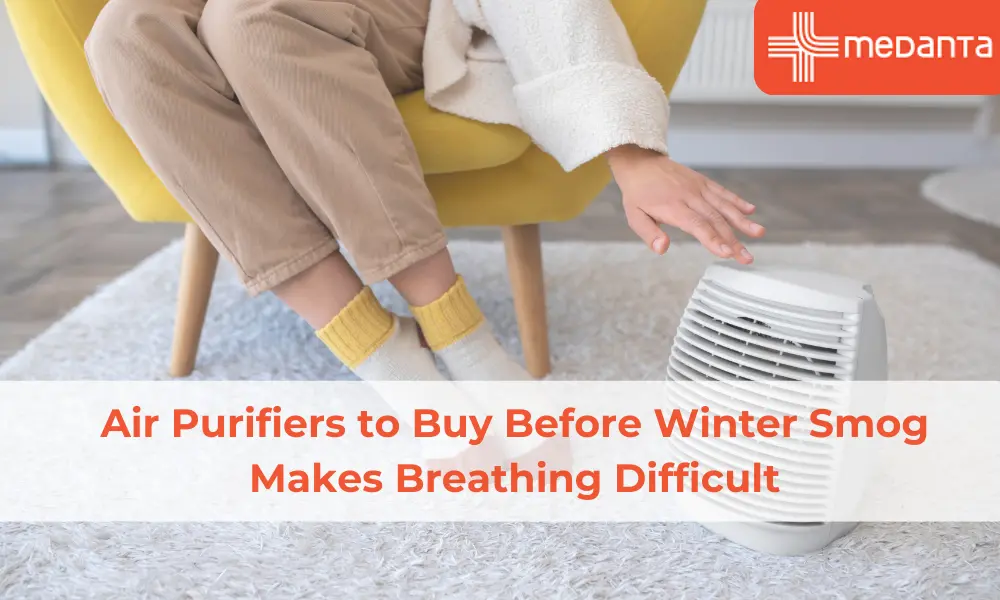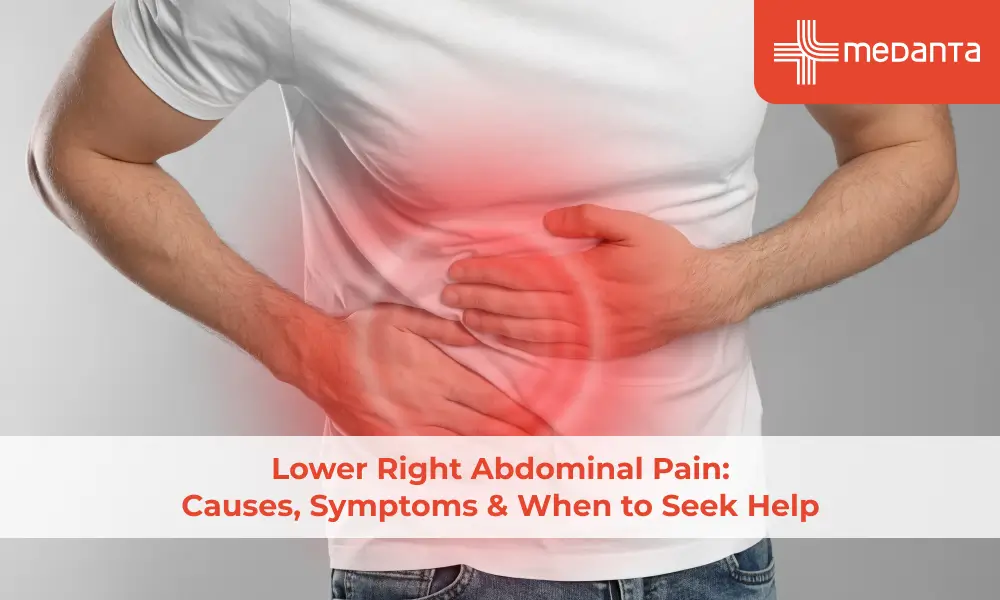Air Purifiers to Buy Before Winter Smog Makes Breathing Difficult

TABLE OF CONTENTS
- Why Winter Smog Gets Worse: Causes and Health Effects
- How Air Purifiers Help Combat Indoor Pollution
- Key Features to Look for in an Air Purifier for Smog
- Type of Air Purifiers
- Portable vs. Whole-Home Air Purifiers – What's Right for You?
- Energy Efficiency and Smart Features in Modern Purifiers
- Maintenance Tips to Keep Your Purifier Working All Winter
- Cost vs. Value – Are Expensive Air Purifiers Worth It?
- Final Comparison Table of the Air Purifiers
- FAQs
Your home's air can be two to five times more polluted than outdoor air. This alarming reality makes an air purifier a vital addition to your rooms, especially when you have closed windows during the winter months.
Do you know that PM2.5 levels inside your home often surge to 3-5 times above the safe limit during winter or if you are staying near highways? Extended exposure to such contaminated air leads to severe respiratory issues, allergies, and cardiovascular problems. Your room air cleaners can become essential appliances to curb these invisible threats. The best room air purifier can transform your living environment with a few models that can reduce heavy smoke pollution by up to 99.6% in just 30 minutes.
Health experts suggest at least five air exchanges per hour to maintain clean indoor air, which makes a quality air purifier essential for every home. The right features become significant to consider before winter smog arrives, whether you need an air purifier for small rooms or the best one to control dust.
Why Winter Smog Gets Worse: Causes and Health Effects
Winter smog poses more than just an unpleasant experience - it creates serious health hazards that worsen as temperatures drop. A temperature inversion causes smog formation, unlike fog, when cold air gets trapped beneath warmer air. This pollution-catching blanket forms and hovers close to the ground.
Several elements make this seasonal smog more dangerous:
Snow blankets reflect heat instead of absorbing it
Clear skies cool the surface faster
Still winds limit natural air mixing
Winter's long nights allow more cooling time
Mountain ranges make things worse by creating basin-like areas that block valleys from cleansing winds. To your surprise few habits which we commonly do during winters add a lot to pollution levels. People need more heating, and wood burning with fossil fuel usage releases harmful particles. Cold weather can cause vehicles to produce up to 10 times more emissions due to increased idling, more cold starts, and less effective exhaust filtration.
This toxic mix affects our health directly.
These pollutants can reach deep into people's lungs and enter their bloodstream. This causes inflammation, breathing difficulties, and makes conditions like asthma and COPD worse.
Air purifiers become vital shields to protect us from these invisible winter threats that steal our breath away.
How Air Purifiers Help Combat Indoor Pollution
Air purifiers become your best defence against indoor pollutants when windows stay shut during cold winter months. Today's room air cleaners use advanced technology to keep your living space healthy, especially when you can't open windows for fresh air.
Room air purifiers work best with multiple filter layers that target different types of contaminants. A good air purifier's success depends on how well it filters and moves air, and on how you take care of it based on what the manufacturer says. The clean air delivery rate (CADR) should be at least two-thirds of your room's size to work properly.
You can consider a smaller air purifier enough if you are looking to purify air in your bedroom only, but bigger spaces need more powerful models with higher CADR ratings to clean all the air effectively.
Key Features to Look for in an Air Purifier for Smog
A good air purifier needs specific features to work against winter smog. Here's what you should look for to make your search easier:
True HEPA Filtration – Get H13 or H14 grade True HEPA filters that capture 99.97% of particles as small as 0.3 microns, including dust, allergens, and harmful PM2.5
Activated Carbon Filter – You need this to remove harmful gases, volatile organic compounds (VOCs), and unpleasant odours that come with smog
Pre-filtration Layer – This catches larger particles like dust and pet hair and helps your main HEPA filter last longer
Clean Air Delivery Rate (CADR) – Higher numbers give you faster purification. Your CADR should be at least two-thirds of your room's area in square feet
Room Size Compatibility
Noise Levels – Pick models that run under 50 decibels, with bedroom units ideally below 35dB
Energy Efficiency – Energy Star certified models cut electricity costs while keeping performance high
Filter Replacement Indicators – These helpful alerts tell you exactly when maintenance is needed
Smart Features – Air quality sensors, automatic mode adjustment, and remote control options make operation convenient
Certifications – Look for independent verifications like AHAM that back up manufacturer claims
Stay away from purifiers with ionisers or ozone generators - they might add more pollutants to your air.
Type of Air Purifiers

The right air cleaner choice depends on understanding how different purification technologies work. Here's a detailed look at five common types found in modern air purifiers:
HEPA
High Efficiency Particulate Air (HEPA) filters are the foundations of filtration technology. Your purifier with true HEPA filters catches 99.97% of particles (as small as 0.3 microns). These filters trap dust, allergens and mould spores effectively. H13 or H14 grade filters provide better protection against PM2.5 pollutants, making them ideal for winter smog.
Activated Carbon Filters
If you have these filters you can get protection from gases, chemicals, and odours that HEPA filters miss through adsorption. Activated carbon's porous structure attracts & holds VOCs, smoke particles, and bad smells. They also give you a shield against dangerous chemicals like formaldehyde, benzene and toluene emerging from your furniture, paints, and household items.
UV air purifiers
UV purifiers kill germs by using ultraviolet light to damage microbial DNA. These devices have major drawbacks. They need long exposure times to kill pathogens and can't remove particles. Some models produce harmful ozone.
Ionic air purifiers
Ionisers emit negative charges that stick to airborne contaminants. This makes pollutants fall onto surfaces rather than getting filtered out. While they reduce airborne particles well, many ionisers create ozone that can harm lungs and make breathing problems worse.
Ozone Generators
Ozone generators should never be used in spaces where people live or work. Manufacturers claim their ozone gas cleans the air, but science shows it harms health and doesn't work at safe levels. Even small amounts can cause chest pain, coughing, and throat irritation.
Portable vs. Whole-Home Air Purifiers – What's Right for You?
The real problem for you can be choosing the right room air cleaner. Both portable units and whole home systems come with their own benefits that depend on your living space and budget.
Aspect | Portable Air Purifiers | Whole Home Air Purifiers |
Original Cost | More affordable | Higher investment |
Coverage Area | Limited to single rooms (150-300 sq ft) | Purifies the entire house through the HVAC system |
Installation | No installation required – simply plug in | Requires professional installation into the HVAC |
Flexibility | Can be moved between rooms as needed | Fixed in place with your HVAC system |
Maintenance | Filter replacements every 6-12 months | Less frequent maintenance with advanced filtration |
Efficiency | Works only when in the room and turned on | Purifies air whenever the HVAC system operates |
Energy Use | Low energy consumption (like a 60-watt light bulb) | May increase overall energy consumption |
Noise Level | Some models can be noisy at higher settings | Operates quietly as part of the HVAC system |
Effectiveness | Targeted cleaning in specific areas | Detailed but may have gaps in coverage |
Ideal For | Renters, small homes, specific problem areas | Homeowners with central HVAC seeking a whole-house solution |
Portable purifiers do their best work in rooms where you spend most of your time, like bedrooms or home offices. Whole-home systems clean the air throughout your house whenever your heating or cooling runs.
People with allergies might benefit from a whole-home system's consistent air filtration. Many homeowners get great results from well placed portable units without spending big on installation costs.
Energy Efficiency and Smart Features in Modern Purifiers
With modern air purifiers you get powerful filtration with energy efficiency. Today's room air cleaners use only 50-200 watts during operation - about the same as a standard light bulb. This makes them more economical than older models.
Energy Star certification is a vital consideration for environmentally conscious consumers. These certified units use less energy than standard models while delivering excellent performance.
Smart features have transformed our interaction with these devices:
Air quality sensors monitor pollution levels and adjust fan speeds automatically when they detect contaminants
Scheduling functions let you program operations during specific hours to reduce unnecessary runtime
Sleep modes lower noise and power consumption at night
Filter replacement indicators take the guesswork out of maintenance timing
Smartphone apps give you remote control and air quality reports
The connectivity options that blend air purifiers into smart home systems are impressive. The best room air purifiers now work naturally with voice assistants like Alexa and Google Home and respond to voice commands. Some models communicate with other household appliances and adjust their operation based on cooking activities or open windows.
Air purifiers with Auto Mode can be an ideal choice if you have smaller rooms. They run at higher speeds only when the quality of air is very poor & switch to energy saving mode as air quality improves. This smart adaptation delivers maximum results with minimum power consumption (exactly what health conscious, budget aware consumers need today).
Maintenance Tips to Keep Your Purifier Working All Winter
Regular maintenance will give your room air cleaner optimal performance during the winter smog season. Well-maintained air purifiers work better and last longer, which saves you money over time.
Key maintenance steps for peak performance:
Always turn off and unplug your air purifier before beginning any maintenance work
Clean the pre-filter every two weeks when using the device 24 hours daily
Replace HEPA and carbon filters every 6-12 months with 24/7 usage
Never wash HEPA or carbon filters—they require replacement, not cleaning
Gently vacuum pre-filters with a soft brush attachment, keeping 5-10mm distance to prevent damage
Wipe external surfaces and sensors with a damp cloth to prevent dust buildup
Reset the filter replacement reminder after installing new filters
Store unused purifiers in protective bags during the off-season
Winter pollution levels typically triple, which makes filters clog much faster than usual.
Note that your air purifier works best on higher settings during evening hours (to curb increased smoke and dust levels that rise after sunset).
Cost vs. Value – Are Expensive Air Purifiers Worth It?
Air purifier prices range from budget-friendly to premium models that might shock you. Many people wonder if paying more actually gets you cleaner air.
The answer isn't black and white. Simple room air cleaners in the lower range use single-stage filtration and work well in smaller spaces like bedrooms or offices. Mid-range air purifiers come with true HEPA filtration and activated carbon layers—you need these features to fight winter smog.
Premium models give you more benefits:
They clean larger spaces faster
Their filtration systems catch tinier particles
Smart features track air quality and adjust automatically
They're built better with longer warranties
They run quietly even at high speeds
Energy efficiency cuts long-term costs
The original purchase price isn't everything. Budget models need new filters every 3-4 months, while premium filters last 12-18 months. Cheaper units also tend to use more power and don't clean as well.
Mid-range air purifiers hit the sweet spot of performance and value for apartments or small homes. Higher quality systems are a great investment for you if you or someone in your family has allergies, pets or you have homes in polluted areas. The best air purifier for your space balances upfront cost with long term performance (spending more now often saves money & helps you breathe easier later).
Final Comparison Table of the Air Purifiers
Here's a complete comparison of air purifiers to help you pick the right one:
Model Type | Best For | Key Features | Maintenance Cost | Ideal Room Size |
Basic HEPA | Single-stage filtration | Medium (3-4 months) | Small (up to 200 sq ft) | |
HEPA + Carbon | Smog & odours | Dual filtration, basic sensors | Medium-High (6 months) | Medium (200-400 sq ft) |
Premium Smart | Comprehensive protection | Multi-stage filtration, smart features | Low-Medium (12 months) | Large (400+ sq ft) |
Portable | Bedroom/office use | Compact design, quieter operation | Medium (6 months) | Small (up to 250 sq ft) |
Whole-Home | Complete coverage | HVAC integration, whole-house filtration | Low (annual) | Entire home |
Your perfect air cleaner depends on your specific needs. Simple models work great for occasional use in smaller spaces. Mid range options can be a better choice when smog levels peak. Premium models offer superior filtration that can make your investment worthy (especially for families with allergies or homes in heavily polluted areas). It is always better to consider your current budget & running costs before you decide.
FAQs
How effective are air purifiers against winter smog?
Air purifiers with HEPA filters can be your shield against winter smog. They capture up to 99.97% of particles as small as 0.3 microns. Models with True HEPA filters (H13 or H14 grade) and activated carbon filters to tackle both particulate matter and harmful gases will give you the best results.
Are air purifiers particularly useful during the winter months?
Yes, air purifiers are especially beneficial in winter. During winters we keep our windows closed & indoor air becomes stagnant. In such situations pollutants in your home can accumulate. Air purifiers help combat this by continuously filtering the air, reducing contaminants and improving overall indoor air quality during the colder months.
What features should I prioritise when choosing an air purifier for smog?
When selecting an air purifier for smog, go for points including but not limited to:
HEPA filtration
Activated carbon filters (for gas & odour removal)
Appropriate Clean Air Delivery Rate (CADR) for your room size.
Also consider noise levels, energy efficiency, and smart features like air quality sensors and automatic mode adjustment.
How do portable air purifiers compare to whole-home systems?
Portable air purifiers are more affordable, flexible, and ideal for targeting specific rooms. Whole-home systems offer comprehensive coverage but require professional installation and a higher initial investment. Your choice depends on factors like living situation, budget, and desired coverage area.
How often should I maintain my air purifier during winter?
During winter, when pollution levels typically increase, more frequent maintenance is advisable. Clean pre-filters every two weeks, replace HEPA and carbon filters every 6-12 months (or more frequently if used 24/7), and regularly wipe external surfaces. Always follow manufacturer guidelines and consider checking filters weekly during peak smog periods.






